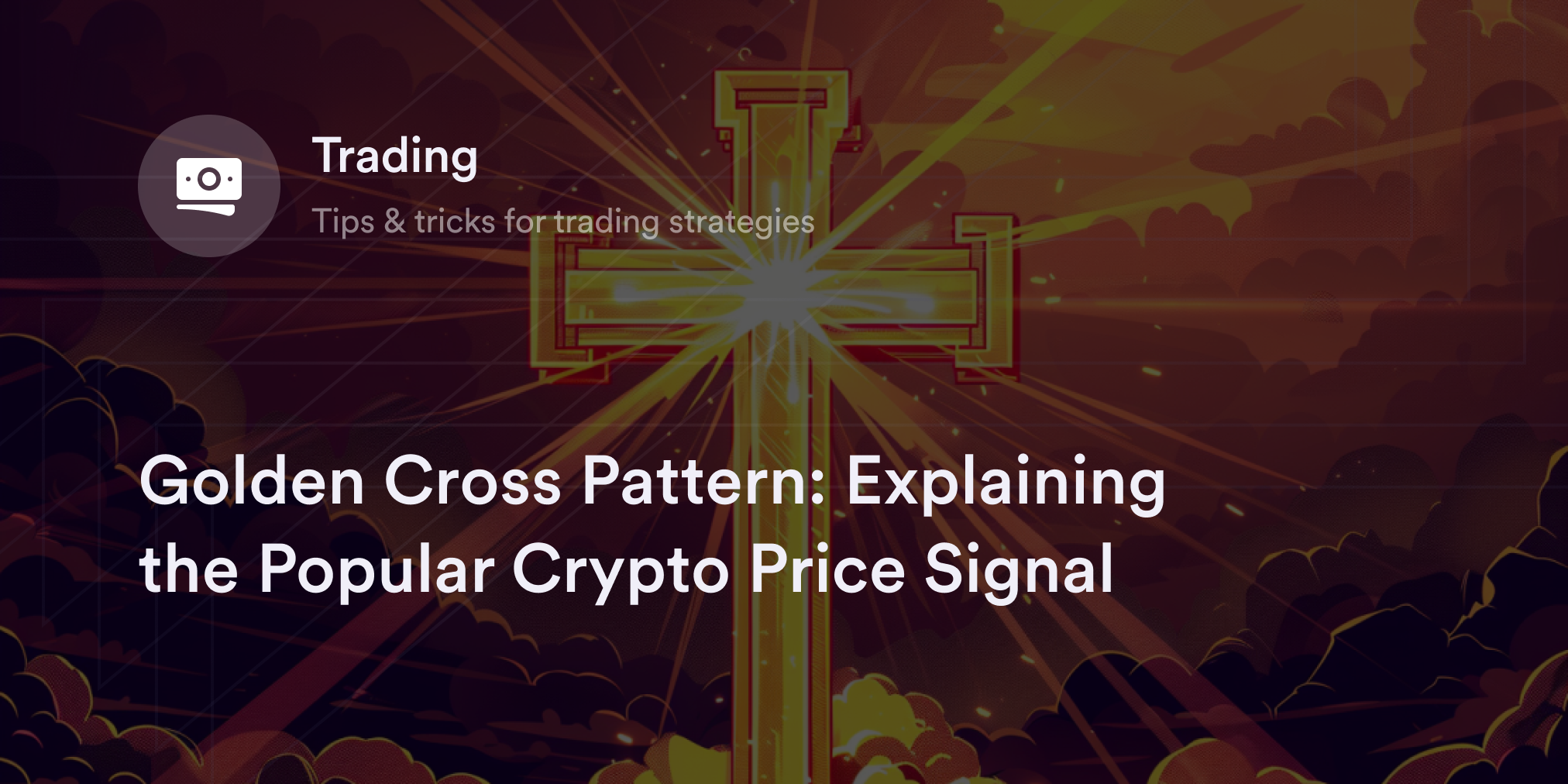


Navigating the intricate and often unpredictable cryptocurrency market can be challenging even for veteran traders, especially when speculating on future prices. That’s because digital assets are known for their volatility, making accurate predictions a complex task.
One strategy that addresses this challenge is crypto futures trading. The method involves entering contracts to buy or sell a cryptocurrency at a predetermined future date and price, providing a structured approach to speculate on price movements.
In this guide, we’ll explore the mechanics of crypto futures trading, including what it is, how it works, its benefits, and its risks.
What are crypto futures?
Crypto futures are agreements for the future transaction of cryptocurrencies at a specified price and date. They differ from regular spot trading, where assets are bought and sold instantly at current market prices, allowing traders to plan for future price movements.
A crypto futures contract is a legal promise to exchange a certain amount of cryptocurrency at a future date and price. The primary purposes of these contracts include:
Leverage: This allows traders to control more substantial amounts of cryptocurrency than their capital investment would typically permit. It's a way of amplifying potential profits (or losses) from relatively small price movements in cryptocurrencies.
Hedging: This means traders can protect themselves against price swings in the market. If a trader expects a cryptocurrency’s price to drop, they can use futures to lock in a higher selling price in advance.
Speculation: If traders prefer to predict and bet on future price movements without owning the cryptocurrency, futures trading allows them to guess where prices are headed and potentially profit from these predictions.
Historical context and evolution of crypto futures
The journey of crypto futures and markets is fascinating, marking a significant development in cryptocurrencies and derivative trading. Here’s a timeline of the evolution of crypto futures:
Early days
Crypto futures trading began to gain traction as cryptocurrencies like Bitcoin (BTC) started to attract widespread attention. Early adopters recognized the need for instruments to manage the volatility of these digital assets.
First major launches
The launch of Bitcoin futures contracts by major exchanges like the CME Group and Cboe in late 2017 was a landmark moment. These platforms provided traders with the tools to speculate on future prices and hedge against price fluctuations in the crypto market.
Growth and expansion
Since these initial launches, the market for cryptocurrency futures, including the U.S. crypto futures trading, has expanded rapidly. A diverse range of futures contracts, including those for other cryptocurrencies like Ethereum (ETH), have been introduced. Trading platforms like Kraken and Bybit have played significant roles in this expansion, offering various futures contracts and adding liquidity to the market.
Regulatory landscape
As crypto futures gained popularity, they drew the attention of regulatory bodies. The evolving regulatory landscape has been shaping the future market, focusing on ensuring trader safety and market integrity.
How does crypto futures trading work?
Unlike traditional spot trading, futures trading revolves around contracts that predict the price of virtual currencies at a future date. To understand how this technique works, let's review the components that dictate the terms of the trade.
Expiration date: Each future contract has a specific expiration date, indicating when the contract ends and the asset must be bought or sold.
Units per contract: This specifies the amount of the cryptocurrency involved in the contract.
Leverage: Leverage in futures trading allows traders to borrow capital to increase their potential return on investment (ROI). Remember, it holds the potential to amplify profits, but it can also significantly increase the risk of losses.
Additionally, settlement methods in crypto futures come in two forms:
Cash settlement: The trader settles the difference in cash without buying or selling the underlying asset.
Physical delivery: This involves the actual transfer of the cryptocurrency upon the contract's expiration.
Types of crypto futures contracts
Different types of contracts cater to various trading strategies and risk appetites in crypto futures trading. Understanding these contract types is crucial for traders to know where to trade futures.
Standard futures contracts: These are traditional futures contracts where traders agree to buy or sell a specific amount of cryptocurrency at a predetermined price on a specified future date. These are ideal for hedging and speculation.
Perpetual contracts: Unlike standard futures, perpetual contracts don’t have an expiration date, allowing traders to hold positions indefinitely. They’re marked to market frequently, usually every day, to align with the underlying asset's current market price. These contracts are popular for their flexibility and are used for long-term positions or for traders who prefer not to be constrained by expiration dates.
Options contracts: Options give traders the right (but not the obligation) to buy or sell a cryptocurrency at a predetermined price before a specific date. They come in two forms: calls (buy) and puts (sell). Traders use options for more complex strategies like hedging, income generation, or speculation on price movements.
Leveraged contracts: These contracts allow traders to borrow funds to increase their trading position, amplifying both potential profits and losses. They're suited for experienced traders comfortable with higher risk and reward scenarios.
Inverse contracts: Inverse futures contracts are denominated in cryptocurrency rather than fiat currency, meaning profits and losses are realized in the digital asset instead of cash. These contracts are favored by traders who prefer to deal directly in cryptocurrencies without converting to fiat.
Benefits of trading cryptocurrency futures
Trading crypto futures offers several advantages, making it a popular choice for many traders. Here are a few key benefits:
Flexibility: Futures contracts enable traders to tailor their strategies to market conditions and personal goals. Whether a conservative approach focusing on hedging or an aggressive strategy aimed at speculation, futures provide the necessary tools.
Liquidity: High liquidity in the futures market translates to more significant trading volumes, ensuring efficient trade execution. This liquidity is particularly beneficial in fast-moving markets, allowing traders to enter and exit positions quickly.
Leverage: With a proper understanding of risk management, traders can use leverage to maximize their market exposure.
Simplicity: Compared to owning crypto directly, trading futures is often seen as a more straightforward way to gain exposure to the crypto market without dealing with digital asset storage and security complexities.
Portfolio diversification: Diversifying investment portfolios is essential for risk management. Crypto futures allow traders to gain exposure to digital assets without direct investment, spreading risk across different instruments.
Adding to these benefits, specific futures trading strategies offer practical applications. Here are two:
Straddle strategy: This involves buying both a call and a put option at the same strike price (aka exercise price). Traders use this to profit from significant price movements in either direction, particularly during periods of high market volatility.
Hedging against spot market positions: Traders with existing cryptocurrency holdings can use futures contracts to hedge against adverse price movements. For example, owning Bitcoin and expecting a short-term price drop can be offset by shorting a Bitcoin futures contract, providing a balance to potential spot market losses.
Risks associated with crypto futures trading
Trading cryptocurrency futures offers several advantages but not without potential risks, including fundamental issues like double spending. Understanding these is essential to avoid pitfalls.
Market volatility: The crypto market's high volatility was notably evident during the sharp price swings of Bitcoin in 2020 and 2021. These fluctuations resulted in significant gains for some but substantial losses for others, underscoring the risk of sudden market shifts.
Leverage risks: The downfall of several leverage traders during market downturns can highlight the dangers of high leverage in futures trading. These events indicate the amplified losses that can occur, especially during market downturns.
Counterparty and operational risks: If an exchange’s platform undergoes an outage, it can lead to a temporary trading halt––highlighting potential risks with reliance on a platform's stability and the counterparty's ability to fulfill contracts.
Dive into crypto futures trading with dYdX
Crypto futures trading is a multifaceted tool, blending flexibility, potential for high returns, and strategic opportunities for traders. While it offers numerous benefits, acknowledging and understanding the inherent risks is equally important.
With dYdX, eligible traders get a decentralized trading platform for crypto perpetuals. For more information on how dYdX works and our latest upgrades, head to our official blog. Also, check out dYdX Academy for a wealth of guides on crypto trading, cryptocurrency exchanges, derivatives, and more, and eligible traders can start trading on dYdX today.
Disclosures
The content of this article (the “Article”) is provided for general informational purposes only. Reference to any specific strategy, technique, product, service, or entity does not constitute an endorsement or recommendation by dYdX Trading Inc., or any affiliate, agent, or representative thereof (“dYdX”). Use of strategies, techniques, products or services referenced in this Article may involve material risks, including the risk of financial losses arising from the volatility, operational loss, or nonconsensual liquidation of digital assets. The content of this Article does not constitute, and should not be considered, construed, or relied upon as, financial advice, legal advice, tax advice, investment advice, or advice of any other nature; and the content of this Article is not an offer, solicitation or call to action to make any investment, or purchase any crypto asset, of any kind. dYdX makes no representation, assurance or guarantee as to the accuracy, completeness, timeliness, suitability, or validity of any information in this Article or any third-party website that may be linked to it. You are solely responsible for conducting independent research, performing due diligence, and/or seeking advice from a professional advisor prior to taking any financial, tax, legal, or investment action.
You may only use the dYdX Services in compliance with the dYdX Terms of Use available here, including the geographic restrictions therein.
Any applicable sponsorship in connection with this Article will be disclosed, and any reference to a sponsor in this Article is for disclosure purposes, or informational in nature, and in any event is not a call to action to make an investment, acquire a service or product, or purchase crypto assets. This Article does not offer the purchase or sale of any financial instruments or related services.
By accessing this Article and taking any action in connection with the information contained in this Article, you agree that dYdX is not responsible, directly or indirectly, for any errors, omissions, or delays related to this Article, or any damage, injury, or loss incurred in connection with use of or reliance on the content of this Article, including any specific strategy, technique, product, service, or entity that may be referenced in the Article.







